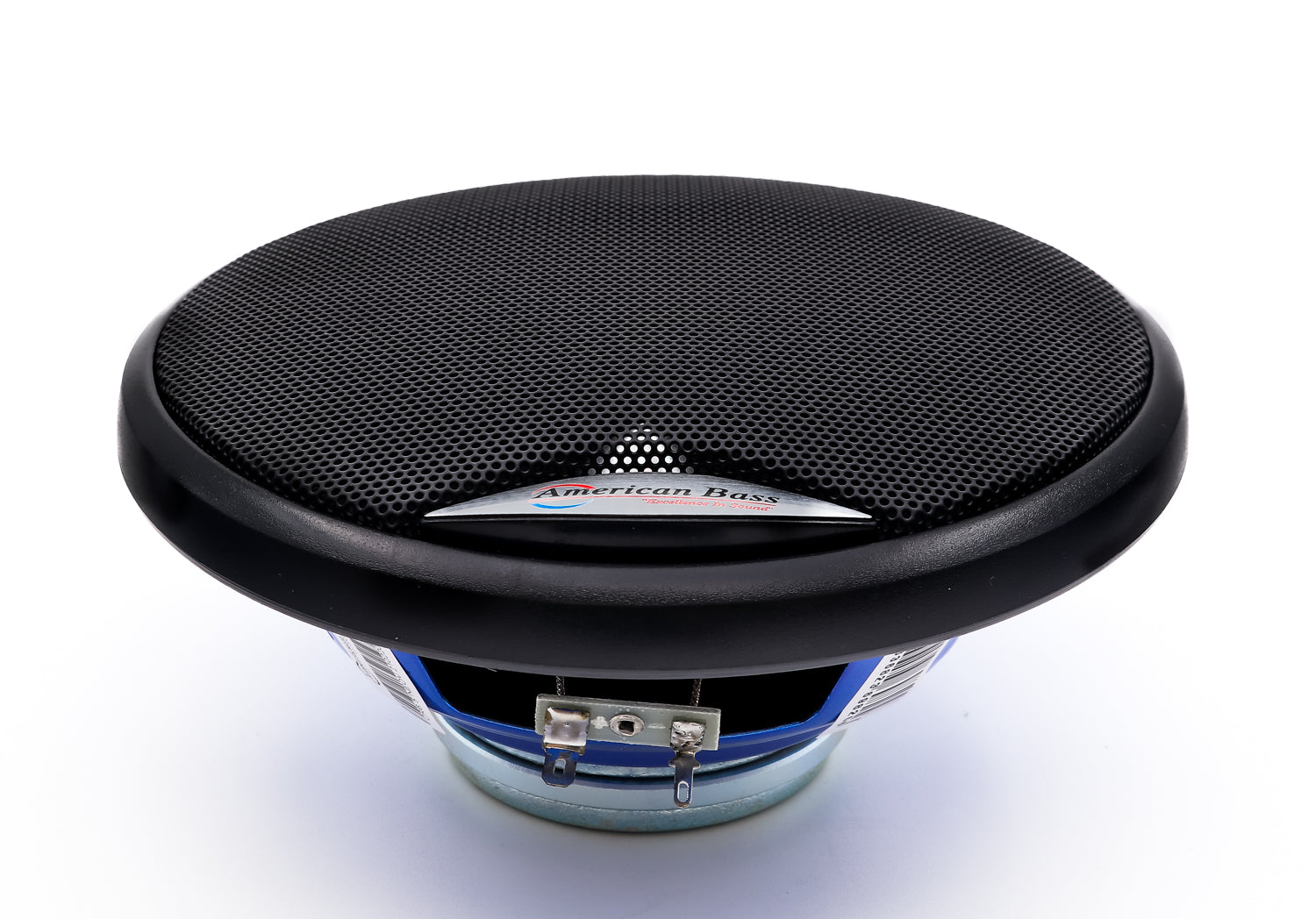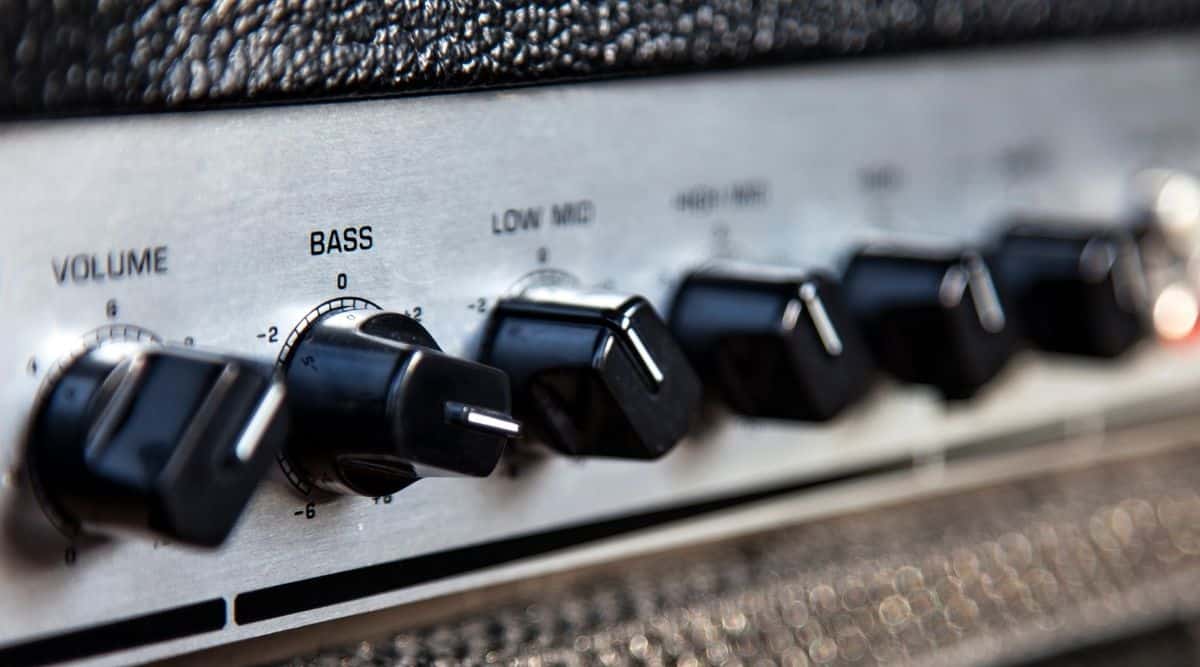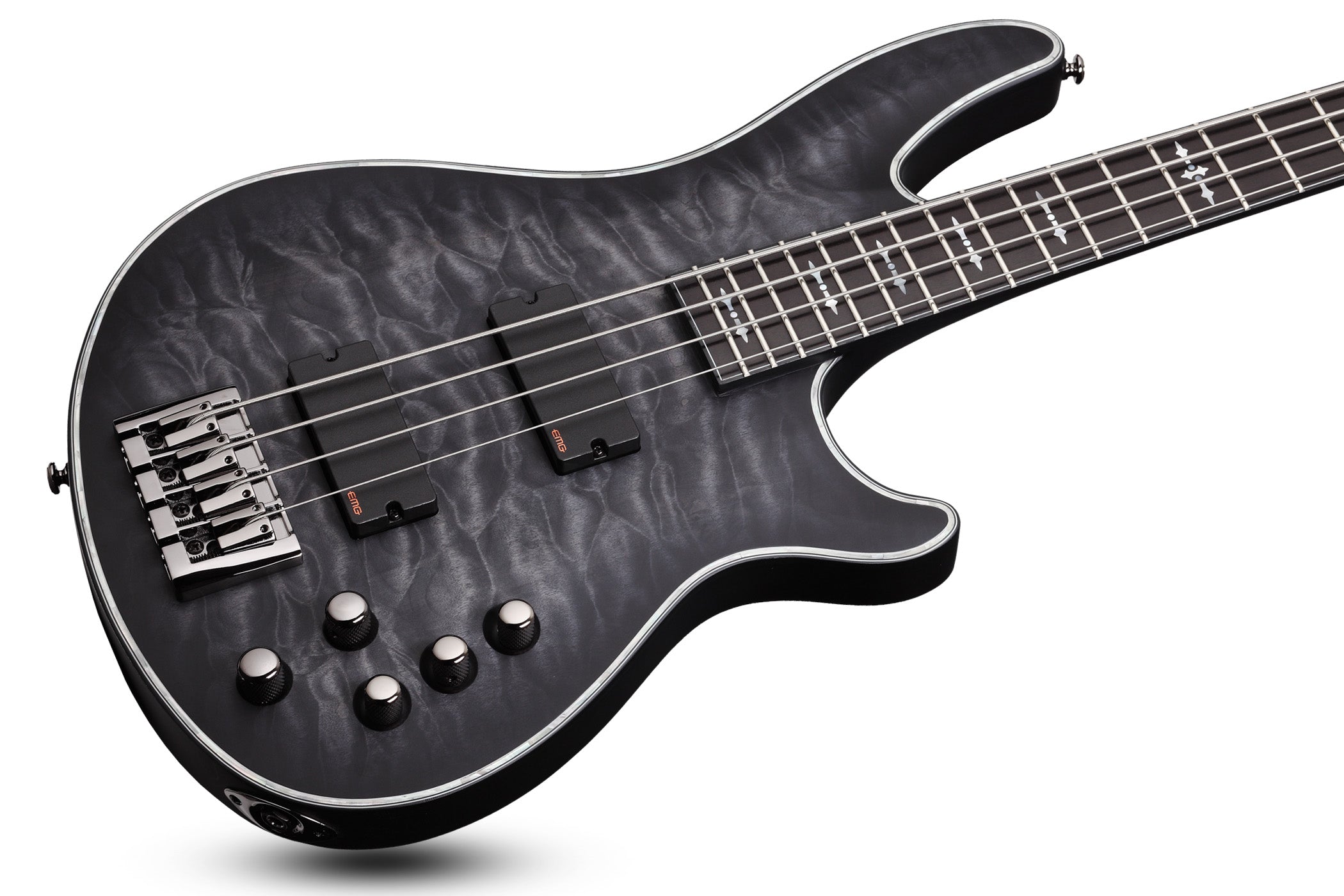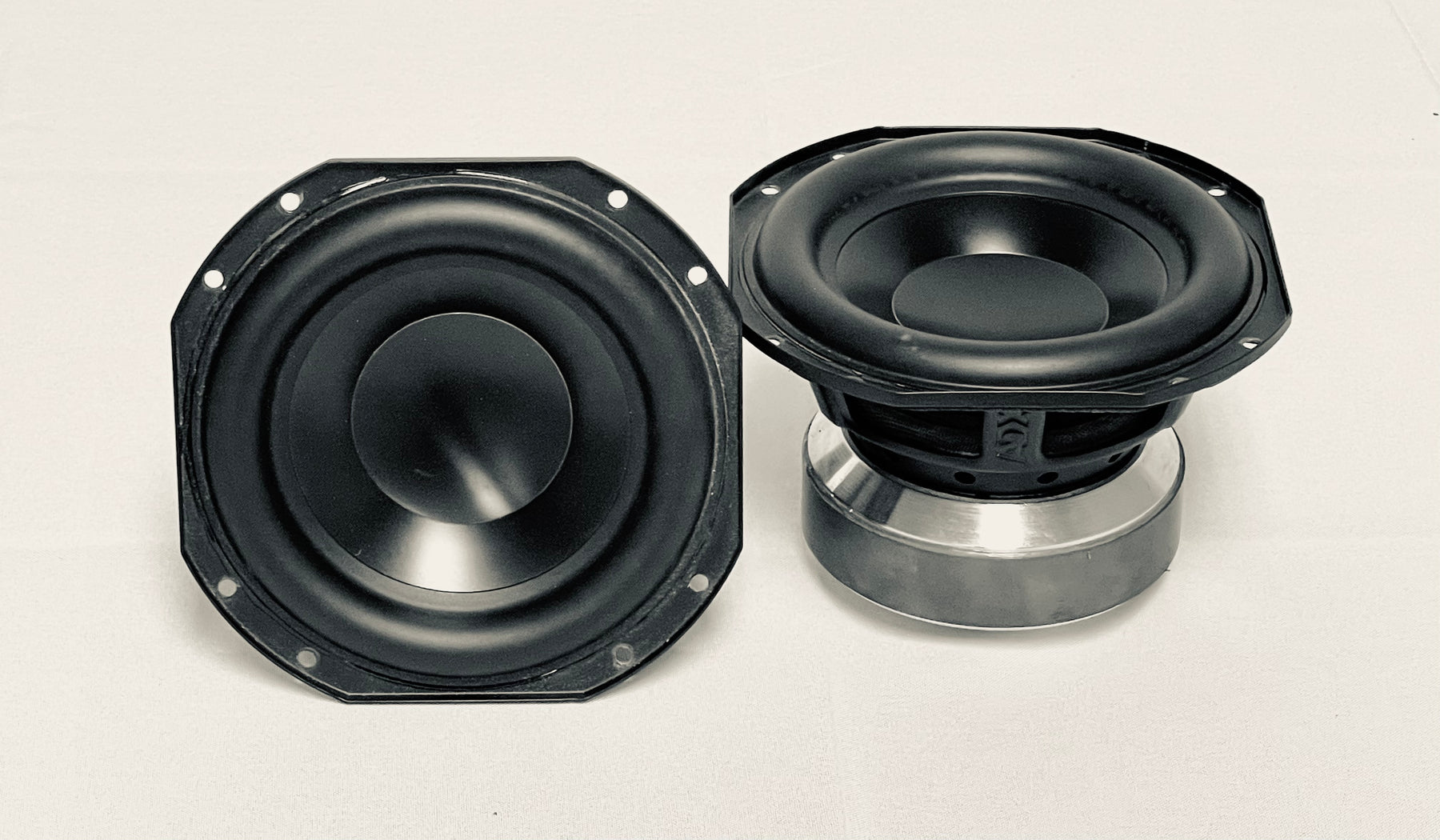Home>Instruments>Bass>What Is The Bass
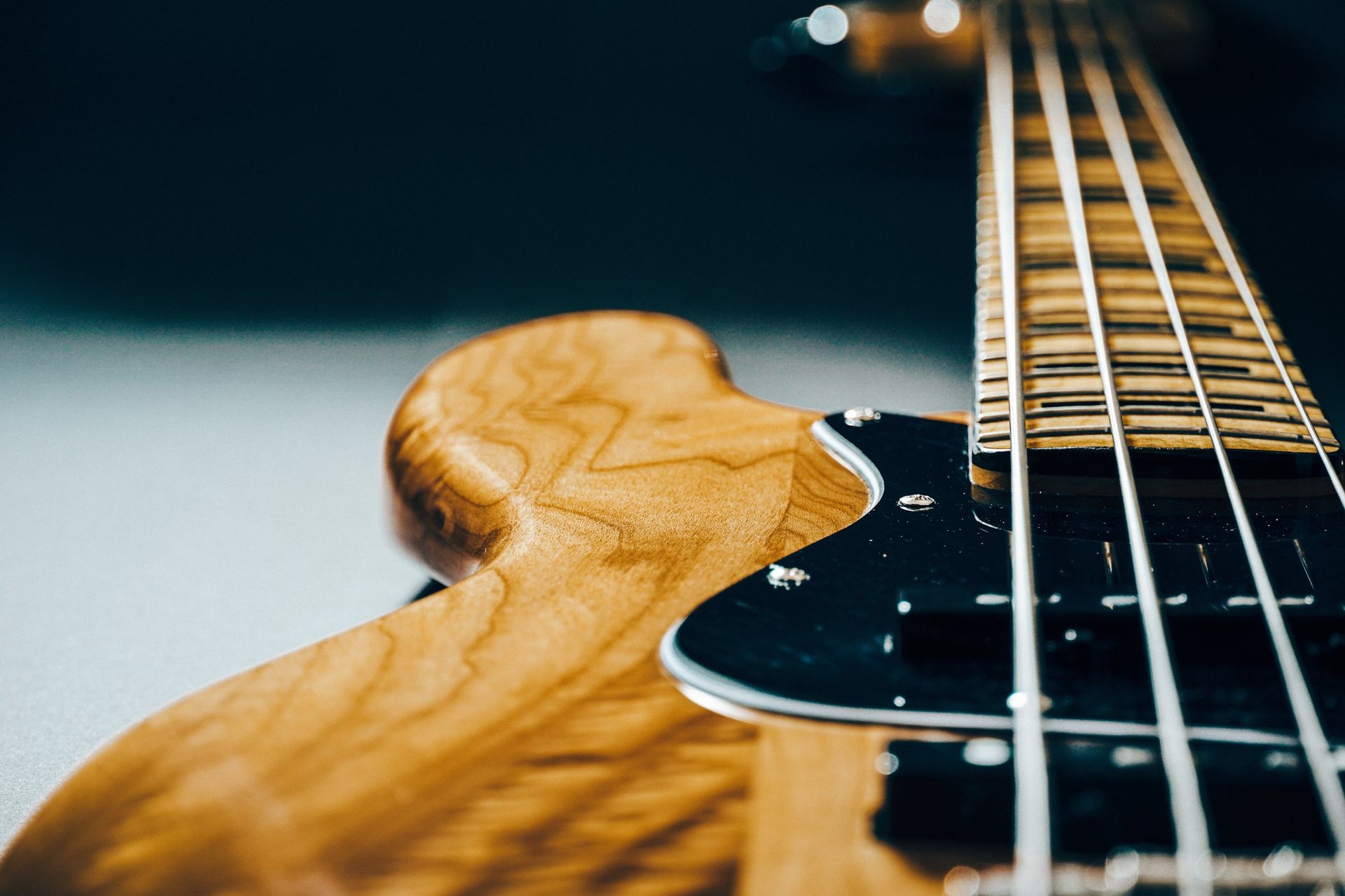

Bass
What Is The Bass
Modified: February 15, 2024
Discover the power and versatility of the bass guitar. Whether you're a beginner or a seasoned player, learn everything you need to know about bass playing, techniques, and equipment.
(Many of the links in this article redirect to a specific reviewed product. Your purchase of these products through affiliate links helps to generate commission for AudioLover.com, at no extra cost. Learn more)
Table of Contents
Introduction
The bass is a fundamental component of music that adds depth, richness, and rhythm to a composition. It refers to both a low-pitched musical instrument and the role it plays in various genres of music. Whether it’s the thumping bassline in a rock song or the driving force in a jazz ensemble, the bass sets the foundation for the rest of the instruments to build upon.
With its deep, resonant sound, the bass provides the backbone of the harmonic structure in a musical arrangement. It creates a sense of stability by anchoring the melodies and harmonies and establishing the rhythmic framework. The bass can be found in a wide range of music genres, including rock, jazz, funk, reggae, hip-hop, and many more.
The bass is a versatile instrument that can be played in various forms, such as the upright bass, electric bass, acoustic bass guitar, and more. Each type of bass instrument has its unique characteristics and capabilities, allowing bassists to explore different sounds and techniques.
In this article, we will delve into the world of bass, exploring its definition, history, types of instruments, role in music, techniques and styles of playing, as well as some notable bassists who have made significant contributions to the art of bass playing.
Whether you’re a musician looking to explore the world of bass or simply a music lover interested in learning more about this essential element, this article will provide you with a comprehensive and engaging overview of the bass and its importance in the realm of music.
Definition of Bass
The term “bass” refers to both a range of low-pitched musical instruments and the role they play in music. In terms of instruments, the bass is typically associated with low-frequency sounds and is responsible for providing the foundation and rhythm of a musical composition. The bass creates a sense of depth and resonance that adds richness and complexity to the overall sound.
As a musical role, the bass encompasses much more than just an instrument. It is a crucial element in a piece of music, serving as the link between the rhythmic and melodic components. The bass serves as the anchor, holding the composition together and providing stability and structure. It not only establishes the key and tempo but also connects the various elements of the music, such as the drums, chords, and melodies.
Traditionally, the bass was associated with instruments like the double bass or upright bass, which are large, stringed instruments played with a bow or plucked with the fingers. However, with the advent of electric bass guitars in the mid-20th century, the bass took on a new form. Electric bass guitars have a similar range and function as the double bass but offer a more convenient and versatile option for bassists, especially in modern genres like rock and jazz.
In addition to the double bass and electric bass guitar, there are other types of bass instruments as well, including the acoustic bass guitar, bass synthesizers, and even certain keyboards and synthesizers capable of producing bass sounds. Each type of bass instrument has its own unique sound qualities and playing techniques, but they all share the common purpose of providing low-end support to the music.
It is important to note that the bass is not limited to a specific musical genre. While it is commonly associated with genres like rock, jazz, funk, and reggae, the bass can be found in various styles and cultures worldwide. Its versatility allows it to adapt and contribute to a wide range of musical genres, making it an essential element in the world of music.
In the next sections, we will explore the history of bass instruments, the different types of bass instruments, the role of bass in music, and the techniques and styles of bass playing, shedding light on the various aspects of this fascinating musical element.
History of Bass Instruments
The history of bass instruments can be traced back thousands of years, with early civilizations recognizing the need for low-pitched sounds to complement higher-pitched instruments. In ancient times, various cultures around the world developed bass-like instruments to provide a foundational element in their music.
One of the earliest known bass instruments is the double bass or upright bass. Its roots can be traced back to the 16th century in Europe, where it was initially used in orchestras and chamber music ensembles. The double bass is a large, wooden instrument that is played either with a bow or plucked with the fingers. It produces a rich and resonant sound and remains a prominent instrument in classical music.
As music evolved and new genres emerged, the need for a more portable and versatile bass instrument became apparent. In the 1930s, the electric bass guitar was invented by musician and inventor Paul Tutmarc. Initially called the “electronic bass fiddle,” it featured a solid body and magnetic pickups that converted the vibrations of the strings into electrical signals. This groundbreaking invention revolutionized the world of bass playing and helped shape the sound of popular music in the 20th century.
The electric bass guitar gained prominence in the 1950s and 1960s, particularly with the rise of rock ‘n’ roll and its incorporation into bands and ensembles. Bassists like James Jamerson, Paul McCartney, and Jaco Pastorius pioneered new techniques and styles of playing, elevating the bass to a more prominent and melodic role within the music. The electric bass guitar became an integral part of popular music genres such as rock, funk, R&B, and jazz fusion.
With advancements in technology, other types of bass instruments also emerged. The acoustic bass guitar, a variant of the traditional acoustic guitar, offered a warmer and more intimate sound while still maintaining the portability and convenience of a guitar-like instrument. Bass synthesizers and keyboards equipped with bass sounds allowed musicians to create electronic bass lines and experiment with new sonic possibilities.
Today, bass instruments continue to evolve and diversify. Bassists explore new playing techniques, experiment with effects pedals and amplifiers, and push the boundaries of what the bass can do. From virtuosic solos to intricate rhythmic patterns, the bass has become a versatile and expressive instrument in its own right.
The history of bass instruments is a testament to the vital role they play in music. From the resonance of the double bass to the punch and clarity of the electric bass guitar, the bass brings depth, groove, and emotion to countless musical compositions, ensuring its place as a fundamental component of the musical world.
Types of Bass Instruments
There are several types of bass instruments, each with its unique characteristics and capabilities. These instruments cover a wide range of genres and musical styles, allowing bassists to explore different sounds and techniques. Let’s take a closer look at some of the most common types of bass instruments.
- Double Bass/Upright Bass: The double bass, also known as the upright bass, is a large, wooden instrument played with a bow or plucked with the fingers. It is often used in classical music and jazz ensembles, providing a deep and resonant foundation.
- Electric Bass Guitar: The electric bass guitar is the most popular type of bass instrument in contemporary music. It features a solid body, magnetic pickups, and is played with the fingers or a pick. With its versatility and wide range of tones, the electric bass guitar is a staple in genres such as rock, pop, funk, and jazz.
- Acoustic Bass Guitar: The acoustic bass guitar is a variant of the traditional acoustic guitar. It has a larger body and longer scale length to accommodate lower frequencies. The acoustic bass guitar offers a warmer and more intimate sound and is suitable for unplugged performances and intimate settings.
- Bass Synthesizer: Bass synthesizers are electronic instruments capable of generating bass sounds using synthesis techniques. They allow musicians to create a wide range of bass tones, from traditional sounds to futuristic and experimental textures, making them popular in electronic and experimental music.
- Keyboards/Synthesizers: Certain keyboards and synthesizers also have bass capabilities. These instruments feature bass sounds that can be played using the keyboard or triggered via MIDI controllers. They are commonly used in genres such as electronic music, pop, and hip-hop.
These are just a few examples of the types of bass instruments available. There are also variations and hybrids that combine different features from multiple instruments to create unique sonic possibilities. Each type of bass instrument offers its own range of tones, playability, and expressive qualities, allowing bassists to find the instrument that best suits their preferences and musical style.
Whether it’s the deep resonance of the upright bass, the punchy and versatile electric bass guitar, or the synth-infused textures of a bass synthesizer, these various types of bass instruments enrich the world of music with their distinct sounds and contribute to the overall artistic expression of a composition.
Role of Bass in Music
The bass plays a crucial role in music, providing the foundation, rhythm, and harmony that support and enhance the overall composition. Its importance cannot be overstated, as it serves as the bridge between the rhythmic and melodic elements, adding depth, groove, and coherence to the music.
One of the primary roles of the bass is to establish the harmonic structure of a piece. By playing the root notes of chords or providing a foundational bassline, the bass sets the tonal center and creates a sense of stability. This allows other instruments to build upon the established foundation, resulting in a cohesive and harmonically rich sound.
In addition to its harmonic function, the bass is responsible for creating rhythmic momentum and drive in a composition. The bassline sets the pulse and groove of the music, serving as the backbone that keeps everything together. It interacts closely with the drums and percussion, establishing the rhythmic patterns and providing a solid rhythmic foundation for the rest of the instruments to follow.
The bass also adds depth and texture to the overall sound. Its low-pitched tones fill out the lower end of the frequency spectrum, balancing the higher-pitched instruments and creating a sense of fullness. The bass adds weight and richness to the music, creating a sonic landscape that is felt as well as heard.
Furthermore, the bass can take on a melodic role, particularly in genres like jazz, funk, and fusion. Bassists often play melodic lines, solos, and improvisations, showcasing their virtuosity and musicality. In these cases, the bass becomes not only a supporting instrument but also a lead voice, contributing to the melodic development and expression of the music.
The role of the bass in music extends beyond its technical functions. It evokes emotions and enhances the overall mood of a composition. A well-executed bassline can create a sense of groove, energy, and excitement, while a more subdued and laid-back bass part can evoke a relaxed and atmospheric mood. The bass has the power to shape the emotional landscape of a piece, further reinforcing its importance in the musical experience.
Ultimately, the bass acts as the glue that binds the various elements of a musical composition together. It ensures that the rhythm, harmony, and melody work in harmony, creating a cohesive and immersive sonic experience. Whether it’s driving the music forward, providing harmonic stability, or adding depth and texture, the bass is an indispensable element that elevates the impact and quality of any musical performance.
Techniques and Styles of Bass Playing
Bass playing encompasses a wide range of techniques and styles that allow bassists to express themselves creatively and contribute to the overall musical experience. From the rhythmic foundations of funk and reggae to the intricate melodies of jazz and fusion, bassists employ various techniques to bring their unique musical voices to life. Let’s explore some of the common techniques and styles of bass playing.
One of the foundational techniques in bass playing is fingerstyle. This technique involves plucking the strings with the fingertips or using a combination of the fingertips and the thumb. Fingerstyle allows for greater control and finesse, enabling the bassist to execute melodic lines, chordal accompaniments, and intricate rhythmic patterns with precision.
Another technique commonly used by bassists is the use of a pick. By using a flat plectrum, bassists can achieve a sharper and more pronounced attack on the strings. This technique is often favored in genres like rock and punk, where a more aggressive and defined sound is desired.
Slapping and popping are techniques commonly associated with funk and slap bass playing. Slapping involves striking the strings with the thumb and then slapping them against the fingerboard to produce a percussive, popping sound. Popping, on the other hand, involves plucking the strings with the thumb or fingers in a way that creates a popping sound. These techniques add a rhythmic and dynamic element to the bassline, creating a distinctive and funky groove.
In addition to techniques, different genres of music have their unique styles of bass playing. For example, in jazz, bassists often engage in improvisation, creating melodic solos and walking basslines that follow the harmonic progression of the music. Jazz bassists also employ complex chord voicings and advanced rhythmic patterns, showcasing their technical proficiency and musicality.
Funk bass playing is characterized by syncopated rhythms, tight grooves, and the use of slapping and popping techniques. Funk bassists work closely with the drummer to create a solid rhythmic foundation and emphasize the downbeats to drive the music forward.
Reggae bass playing typically incorporates a steady and repetitive bassline that emphasizes the offbeat or the “one-drop” rhythm. These basslines provide a hypnotic and rhythmic backbone to the music, creating a relaxed and infectious groove.
Rock bass playing often focuses on providing a solid foundation with a prominent and driving bassline. Bassists in rock bands may use a combination of fingerstyle and pick techniques to achieve a powerful and punchy sound that supports the guitars and drums.
These are just a few examples of the techniques and styles of bass playing. Bassists have a vast range of possibilities at their disposal, allowing them to adapt and contribute to various musical genres and styles. Whether it’s holding down the rhythm, playing melodic solos, or adding intricate embellishments, bassists play a vital role in shaping the sound and feel of any musical composition.
Notable Bassists
Throughout the history of music, there have been numerous influential and talented bassists who have left an indelible mark on the world of music. Their skills, creativity, and contributions have helped shape the role of the bass in various genres and have inspired generations of bass players to push the boundaries of their instrument. Let’s explore some of the most notable bassists who have made a significant impact in the realm of music.
- Jaco Pastorius: Known for his virtuosic and innovative playing, Jaco Pastorius was an American jazz bassist who revolutionized the role of the bass in jazz fusion. His fast fingerstyle technique, harmonics, and melodic solos have influenced countless bassists worldwide.
- James Jamerson: As a member of the Funk Brothers, the house band for Motown Records in the 1960s, Jamerson played a pivotal role in shaping the sound of Motown hits. His precise and melodic bass lines can be heard on legendary recordings by artists such as Stevie Wonder, Marvin Gaye, and The Supremes.
- Geddy Lee: Canadian musician Geddy Lee is best known as the lead vocalist and bassist of the progressive rock band Rush. His intricate bass playing, use of effects, and distinctive tone have made him a highly influential figure in the world of rock and progressive music.
- Flea: A founding member of the Red Hot Chili Peppers, Flea is renowned for his energetic and aggressive bass playing style. His dynamic slap bass technique and inventive bass lines have helped define the sound of the band and have influenced countless bassists in the realms of rock, funk, and alternative music.
- Victor Wooten: A master of both technique and musicality, Victor Wooten is considered one of the greatest bassists of all time. His incredible speed, melodic improvisation, and innovative use of harmonics have made him a force to be reckoned with in the world of jazz, funk, and fusion.
- Carol Kaye: As one of the most recorded bassists in history, Carol Kaye played on hundreds of hit records in the 1960s and beyond. Her impeccable sense of timing and versatility across genres have made her a highly respected figure in the music industry.
- John Paul Jones: As the bassist and keyboardist of Led Zeppelin, John Paul Jones brought a melodic and driving force to the band’s sound. His influential bass lines can be heard on iconic tracks like “Ramble On” and “Black Dog,” showcasing his superb musicianship and ear for composition.
These are just a few examples of the many remarkable bassists who have made their mark in the music world. Each of these artists has contributed to the evolution of bass playing and has inspired countless musicians to explore new boundaries and possibilities on the instrument. Their creativity, skill, and unique musical voices continue to resonate and inspire bassists and music lovers alike.
Conclusion
The bass holds a significant role in the world of music, providing a foundation, rhythm, and harmonic structure to compositions across various genres. From the deep resonance of the double bass to the versatile sounds of the electric bass guitar, the bass instruments offer a wide range of tones and techniques that allow bassists to express themselves creatively.
We explored the history of bass instruments, from the early days of the double bass to the emergence of the electric bass guitar, and witnessed how advancements in technology have expanded the possibilities for bassists. We also discovered the different types of bass instruments available, each with its unique characteristics and capabilities.
The role of the bass in music is multifaceted. It establishes the harmonic structure, provides rhythmic momentum, and adds depth and texture to the overall sound. The bass has the power to evoke emotions, shape the mood of a composition, and create a sense of groove and coherence.
Furthermore, we delved into the techniques and styles of bass playing, witnessing how different playing techniques, such as fingerstyle, slapping, and popping, contribute to the diverse soundscape of music. We also explored the notable bassists who have made significant contributions to the world of music, inspiring and influencing generations of bass players.
In conclusion, the bass is an indispensable component of music, enriching compositions with its depth, rhythm, and harmonic qualities. It bridges the gap between rhythm and melody, providing the backbone that holds everything together. The bassists who have left their mark on the music world have showcased the endless possibilities of the instrument and continually push the boundaries of what the bass can do.
Whether you are a musician looking to explore the world of bass or a music lover with a newfound appreciation for this essential element, understanding the importance of the bass opens up a new dimension in your musical journey. So, embrace the bass, feel the groove, and let the low-end frequencies transport you to a world of musical possibilities.

